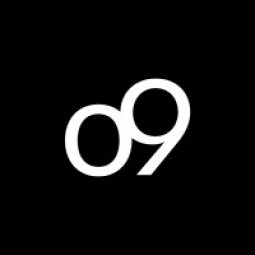Transforming Retail Operations with IoT: A Case Study of an American Clothing and Home Decor Retailer

Technology Category
- Functional Applications - Inventory Management Systems
- Sensors - Level Sensors
Applicable Industries
- Apparel
- Retail
Applicable Functions
- Procurement
- Warehouse & Inventory Management
Use Cases
- Inventory Management
- Predictive Replenishment
About The Customer
The customer is an American clothing and home decor retailer that specializes in casual clothing, luggage, and home furnishings. The company was facing challenges with its manual and Excel-driven planning processes across various functions and time horizons. This led to suboptimal decision-making, inventory management, and service level challenges. The company's key planning processes, including demand planning and replenishment planning, were executed in silos, making it difficult to connect the dots and make informed decisions. The company lacked a statistical demand forecast, and the planners were spending a significant amount of time disaggregating the forecast to a size level, leaving little time for actual analysis.
The Challenge
The American clothing and home decor retailer, specializing in casual clothing, luggage, and home furnishings, was grappling with highly manual and Excel-driven planning processes across functions and time horizons. This led to suboptimal decisions, inventory, and service level challenges. The key planning processes, including demand planning and replenishment planning, were executed in silos, without the ability to connect the dots. The company lacked a statistical demand forecast, and planners created forecasts based only on sell-out at an item level. They spent a significant amount of time disaggregating the forecast to a size level, leaving little time for actual analysis. Furthermore, the company faced challenges in accurately performing replenishment planning due to a high level of required manual interventions and processes not supported by analytics.
The Solution
The company adopted o9, a unique platform capable of connecting all planning processes for basic and seasonal product lines across all channels (Retail, Uniform, Catalogue, Online/ Marketplace) and regions on a single integrated cloud-native platform. With o9, the company gained access to sophisticated, collaborative, and ML-driven forecasts, enabling data-driven exception workflows and reducing the time spent on grunt work. The platform also improved the company's ability to manage the replenishment plan for stores and the procurement plan for DCs, at various grains and horizons for all regions. The use of o9’s advanced forecasting and safety stock-driven replenishment plans led to a more balanced inventory in the stores. The Enterprise Knowledge Graph was used to create demand and replenishment knowledge models, replacing Oracle and Excel systems. The functionalities implemented included lost sales correction, outlier cleansing, characteristics-based item mapping for new product introduction, ML forecasting, planner enrichment models to accommodate causal factors, and size scaling functionality.
Operational Impact
Quantitative Benefit

Case Study missing?
Start adding your own!
Register with your work email and create a new case study profile for your business.
Related Case Studies.

Case Study
Fire Alarm System and Remote Monitoring Sytem
Fire alarm systems are essential in providing an early warning in the event of fire. They help to save lives and protect property whilst also fulfilling the needs of insurance companies and government departments.Fire alarm systems typically consist of several inter-linked components, such as smoke detectors, heat detector, carbon monoxide, manual call points, sounders, alarm and buzzer. The fire alarm system should give immediate information in order to prevent the fire spread and protect live and property.To get maximum protection a shoe manufacturer in Indonesia opted for a new fire alarm system to monitor 13 production sites spread over 160 hectars. Although the company had an existing fire alarm system, it could not be monitored remotely.It was essential that the new system would be able to be monitored from a central control room. It needed to be able to connect to the existing smoke detector and manual call point. Information should be easily collected and passed on to the Supervisory Control and Data Acquisition (SCADA) system. Furthermore, the system should have several features such as alarm management, auto reporting, being connected to many client computers without additional cost, and run 24/7 without fails. The company also needed a system which could be implemented without changing the architecture of the existing fire alarm system.

Case Study
IoT Applications and Upgrades in Textile Plant
At any given time, the textile company’s manufacturing facility has up to 2,000 textile carts in use. These carts are pushed from room to room, carrying materials or semi-finished products. Previously, a paper with a hand-written description was attached to each cart. This traditional method of processing made product tracking extremely difficult. Additionally, making sure that every cart of materials or semi-finished products went to its correct processing work station was also a problem. Therefore, the company desired an intelligent solution for tracking assets at their factories. They also wanted a solution that would help them collect process data so they could improve their manufacturing efficiency.

Case Study
Improving Production Line Efficiency with Ethernet Micro RTU Controller
Moxa was asked to provide a connectivity solution for one of the world's leading cosmetics companies. This multinational corporation, with retail presence in 130 countries, 23 global braches, and over 66,000 employees, sought to improve the efficiency of their production process by migrating from manual monitoring to an automatic productivity monitoring system. The production line was being monitored by ABB Real-TPI, a factory information system that offers data collection and analysis to improve plant efficiency. Due to software limitations, the customer needed an OPC server and a corresponding I/O solution to collect data from additional sensor devices for the Real-TPI system. The goal is to enable the factory information system to more thoroughly collect data from every corner of the production line. This will improve its ability to measure Overall Equipment Effectiveness (OEE) and translate into increased production efficiencies. System Requirements • Instant status updates while still consuming minimal bandwidth to relieve strain on limited factory networks • Interoperable with ABB Real-TPI • Small form factor appropriate for deployment where space is scarce • Remote software management and configuration to simplify operations

Case Study
How Sirqul’s IoT Platform is Crafting Carrefour’s New In-Store Experiences
Carrefour Taiwan’s goal is to be completely digital by end of 2018. Out-dated manual methods for analysis and assumptions limited Carrefour’s ability to change the customer experience and were void of real-time decision-making capabilities. Rather than relying solely on sales data, assumptions, and disparate systems, Carrefour Taiwan’s CEO led an initiative to find a connected IoT solution that could give the team the ability to make real-time changes and more informed decisions. Prior to implementing, Carrefour struggled to address their conversion rates and did not have the proper insights into the customer decision-making process nor how to make an immediate impact without losing customer confidence.

Case Study
Digital Retail Security Solutions
Sennco wanted to help its retail customers increase sales and profits by developing an innovative alarm system as opposed to conventional connected alarms that are permanently tethered to display products. These traditional security systems were cumbersome and intrusive to the customer shopping experience. Additionally, they provided no useful data or analytics.



